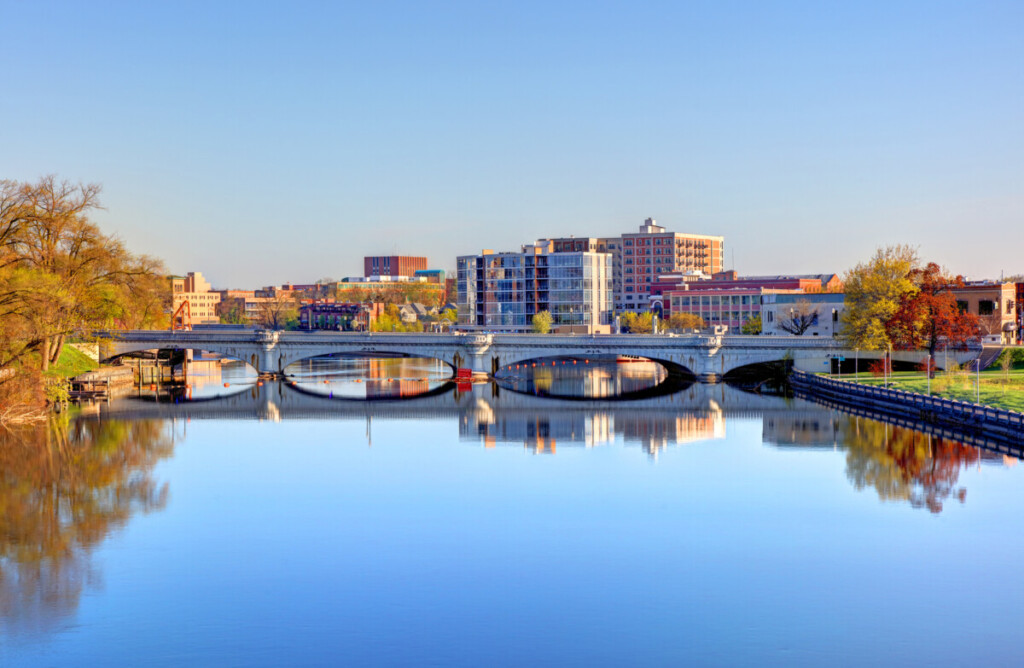10 Pros and Cons of Living in Indiana

Nestled in the heart of the American Midwest, Indiana offers a unique and diverse experience for its residents. From the friendly and welcoming communities to the challenges of its harsh winters, the Hoosier State presents both advantages and disadvantages. So, is Indiana a good place to live? In this Redfin article, we will delve into what it’s like to live in the Hoosier State, exploring the pros and cons of living in Indiana. Whether you’re a local searching for homes for sale in Indianapolis or a newcomer looking for apartments in Evansville, this comprehensive guide will provide valuable insights.
Interested in moving to Indiana? Check out:
Homes for sale in Indiana | Apartments for rent in Indiana | Houses for rent in Indiana
Quick Facts about Indiana
Population
6,785,528
Median home sale price
$265,300
Average rent in Indiana
$1,190
Largest cities in Indiana
Indianapolis, Fort Wayne, Evansville
1. Pro: Affordable cost of living
The Indiana housing market presents a compelling proposition for prospective homebuyers. With a median sale price of $265,300, it offers an attractive alternative to the national median of $439,716, making homeownership more accessible for many. This affordability is mirrored in the cost of living in Indianapolis, Indiana’s capital city, which is 7% lower than the national average, further enhancing the state’s appeal. With this competitive pricing, the Hoosier State not only provides residents with comfortable living options but also makes it an enticing destination for those seeking cost-effective homeownership opportunities.
2. Con: Freezing winters
However, Indiana’s winters can be unforgiving, presenting a notable con for residents. The state experiences cold temperatures and heavy snowfall, often making the winter season a challenging time for those unaccustomed to the harsh weather conditions. The need for snow removal, icy roads, and the extended duration of these cold months can become burdensome for some, requiring careful planning and additional expenses for heating and winter maintenance. While the four distinct seasons are a pro for many, the harshness of Indiana’s winters can be seen as a drawback for those who prefer milder climates.
3. Pro: Excellent higher education institutions
Indiana boasts a robust higher education landscape, with several excellent institutions that contribute to its reputation for academic excellence. Notably, Indiana University, with its multiple campuses across the state, including the renowned Bloomington and Purdue University campuses, is a standout example. These institutions offer various programs and consistently rank among the top public universities nationwide. Additionally, Ball State University, known for its strong programs in education and telecommunications, and the University of Notre Dame, a prestigious private Catholic research university, further exemplify the state’s diverse higher education options.
4. Con: Tornado-prone region
Another con associated with living in Indiana is its susceptibility to natural disasters, specifically tornadoes, as it falls within a tornado-prone region. The Midwest is known for experiencing severe weather patterns, and Indiana is no exception. Tornadoes, often accompanied by thunderstorms, can pose a significant threat to residents and property, especially during the spring and summer. While tornadoes are not an everyday occurrence, the constant need for vigilance and preparedness can be a source of concern for some, making it an aspect of living in Indiana that requires residents to remain weather-aware and well-informed about safety protocols.
5. Pro: Four distinct seasons
The state experiences the full spectrum of four distinct seasons, each offering its unique charm. Spring brings blossoming flowers and rejuvenation, while summer invites warm and sunny days, perfect for outdoor activities. In the fall, the landscape transforms into a breathtaking tapestry of vibrant colors as the leaves change, creating a picturesque setting. Winter, while challenging, blankets the state in a serene layer of snow.
6. Con: High humidity during the summer
Indiana’s summers come with a con that might not be for everyone – high humidity. The state experiences warm and often muggy weather during the summer months, which can be uncomfortable for those who prefer drier climates. The combination of high temperatures and humidity can lead to discomfort, making outdoor activities, especially during the peak of summer, less enjoyable. Additionally, the increased humidity levels can contribute to the formation of severe thunderstorms, which can concern residents.
7. Pro: Proximity to major cities
One of Indiana’s notable advantages is its proximity to major cities, offering residents the best of both worlds. The state is conveniently located near major urban centers such as Chicago and Louisville, providing access to world-class cultural attractions, entertainment, and employment opportunities. This accessibility to major cities allows Indiana residents to enjoy the benefits of urban life while relishing the more relaxed pace and lower cost of living that the state offers.
8. Con: There are corn farms everywhere
One aspect that some residents might find less appealing about living in Indiana is the prevalence of corn farms throughout the state. While Indiana’s agricultural industry is vital and celebrated, the sheer abundance of corn farms can be a drawback for some. The extensive fields of corn can dominate the landscape in certain areas, potentially leading to a sense of monotony in the scenery.
9. Pro: Rich agricultural and farming communities
The Hoosier State’s vast stretches of fertile land are dedicated to cultivating crops like corn and soybeans, sustaining the agricultural industry, and contributing to the nation’s food production. These communities not only foster a strong sense of tradition and hard work but also create a close-knit and neighborly atmosphere that resonates with residents. Farmers’ markets, local produce, and farm-to-table experiences are abundant, providing fresh and wholesome options for food.
10. Con: Poor public transportation
Another drawback of living in Indiana is the state’s limited and often underdeveloped public transportation system. Many areas in Indiana lack comprehensive public transit options, even popular metros like Indianapolis, where the transit score is 25. This lack of efficient public transportation can result in increased traffic congestion, longer commute times, and limited accessibility to various parts of the state, particularly in rural areas.
The post 10 Pros and Cons of Living in Indiana appeared first on Redfin | Real Estate Tips for Home Buying, Selling & More.





